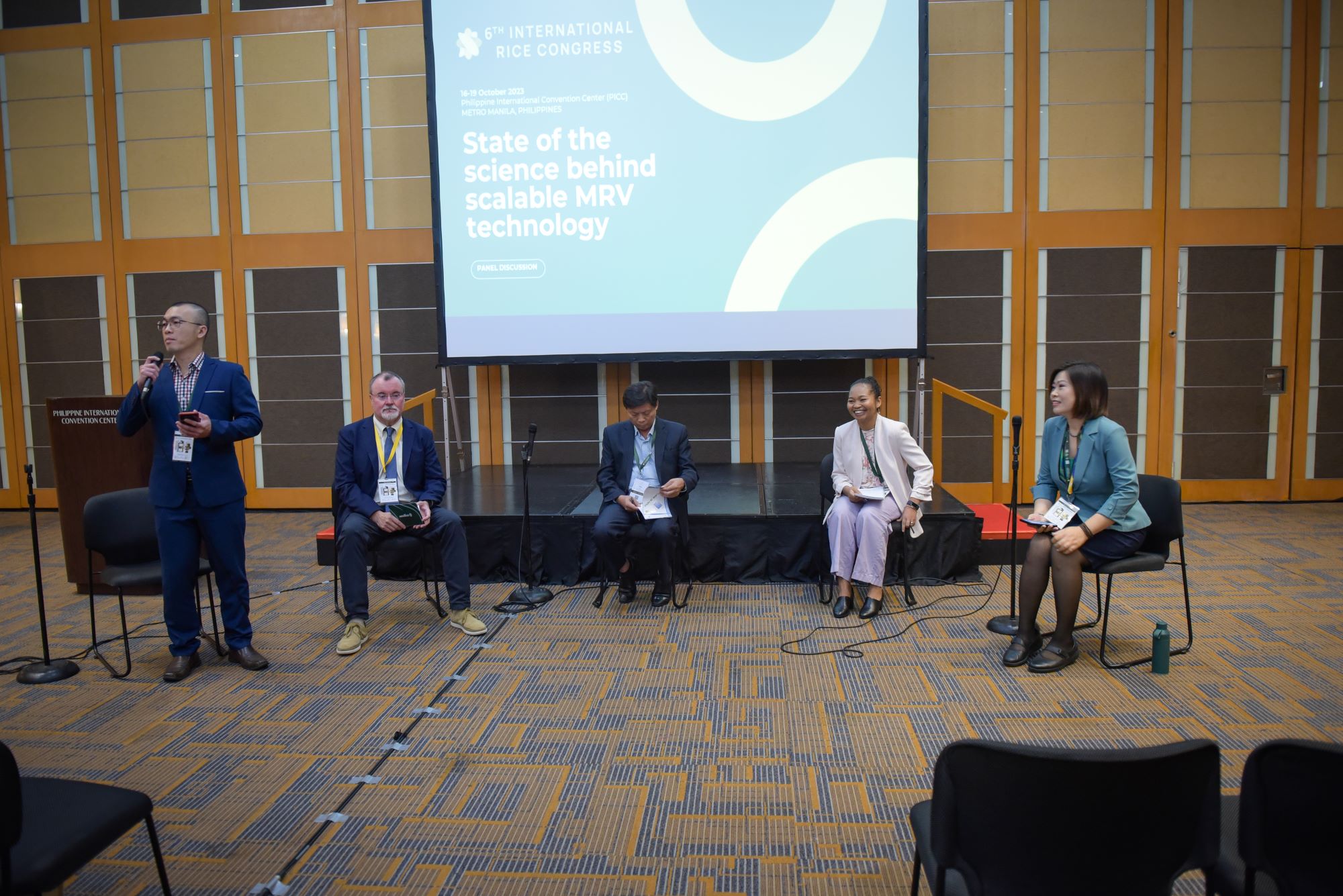State of the science behind scalable MRV technology

Measurement, reporting, and verification (MRV) tools are essential in providing more specific information needed to track signatory countries’ NDCs. Moreover, making sure that these data are available at the farm level allows farmers to access climate financing through emission reduction credits (ERCs). MRV also allows farmers to turn their sustainable practices into credits with monetary value. Both opportunities and challenges to effectively scale MRV technologies were tackled in the side event titled “State of the science behind scalable MRV technology” which was held at the sidelines of the 6th International Rice Congress (IRC 2023) in October. The session was organized by IRC 2023 Silver Sponsor, Regrow Ag.
Global temperatures are projected to rise by 2 degrees Celsius (C) due to climate change. The Paris Agreement, adopted during COP21, aims to keep global temperatures well below 2 degrees C above pre-industrial times while pursuing means to limit the increase to 1.5C.

For transparency, signatory countries are urged to submit Nationally Determined Contributions (NDCs) which are also known as national climate action plans. These are documents that detail the countries’ plans and progress to reduce their greenhouse gas (GHG) emissions to meet the global goals set by the Paris Agreement.
Historically, trying to track carbon emissions in rice farming has been a laborious process. MRV approaches relied solely on ground surveying and chamber measurements, which don’t scale and make carbon projects cost prohibitive for all but government-backed initiatives. Now, emerging technologies are enabling a new era of MRV for rice projects. These cutting edge techniques combine biogeochemical modeling, remote sensing and machine learning with strategic ground sampling and GHG measurements to validate and scale projects across more acreage without sacrificing scientific rigor. The discussion aimed to unveil the state of the science behind MRV, and how these technologies can make carbon projects cost-effective at scale.
One of the greater challenges to scaling MRV is that we currently deploy in farmers’ field tools that were originally developed for research, according to Dr Ando Radanielson, a climate change scientist at the International Rice Research Institute (IRRI) and one of the session’s panelists. “Rice landscapes are so variable, [and] the point measurements may not reflect the whole field,” Radanielson continued, adding that the conventional approach of using static chambers for greenhouse gas measurements is not only unscalable but is also associated with many uncertainties and therefore higher resolution of information and cost effective technologies are required.

Trinh Mai Van of the Vietnamese Institute of Agricultural Environment (IAE) shared their experience when they deployed the Vietnam Sustainable Agriculture Transformation Project (VnSAT). IAE is the local partner of Regrow Ag which provided support in the collection of farm-level data in Vietnam.
Through VnSAT, over 800,000 farmers were trained on the 1 Must Do, 5 Reductions (1M5R) technique which encourages farmers to use certified seeds and reduce the use of seed, chemical fertilizers, pesticides, and water, to ultimately decrease postharvest losses.
“Through this partnership, we were able to manage uncertainties at a more accountable level that is accepted to generate carbon credit,” said Dr. Mai Van.
“The cost of MRV should be manageable as it is scaled and the government can help in reducing operational costs,” said Thu Ha Tran, team leader of the SNV-funded project Transforming Rice Value Chain for Sustainable Development of the Mekong Delta, on the importance of the role of governments in introducing sustainable technologies and practices like MRVs.
Through the Ministry of Agriculture and Development of the Government of Vietnam (MARD), the country is now aiming to produce 1 million hectares of high-quality, low-carbon rice, Dr. Thu added.

For his part, Regrow Ag Chief Strategy Officer William Salas, shared challenges in scaling MRV technology such as transparency in reporting since uncontrolled environments can provide a lot of uncertainties. “We will benefit from real-world examples. There have been great strides in the development of MRV, especially in scaling the technologies and practices toward the farm level. However, there is still a need for partnerships for scaling out and onto the ground to improve research data and the scaling of MRV to address gaps in national reporting,” Salas concluded.
Learn more about the work of Regrow Ag here.